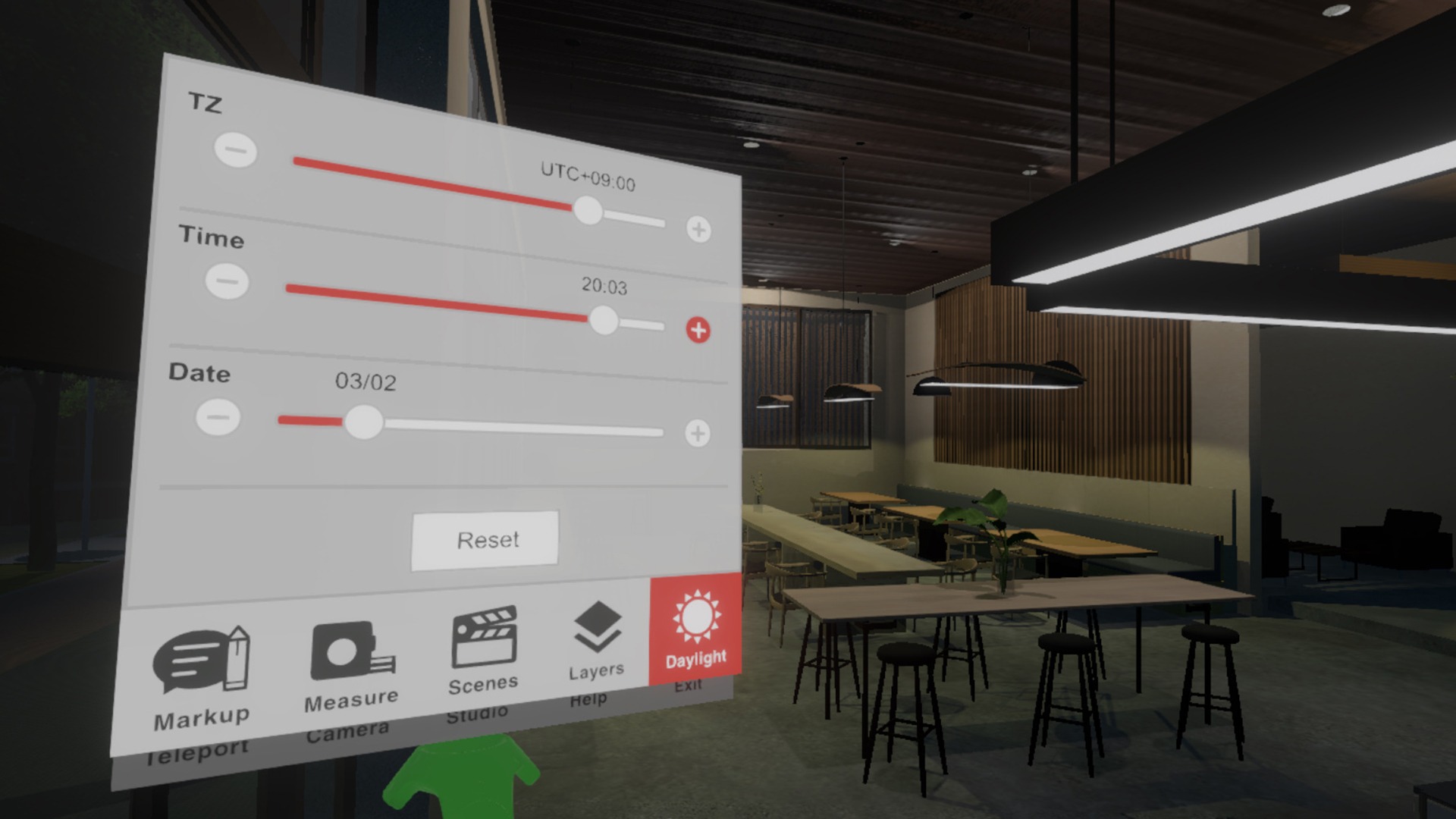One of the biggest hurdles for Architects all around the globe is convincing clients about the suitability and attractiveness of their proposals. It is not by chance that the phrase “A good project needs a good client” rings so true to any architect that has had to deal with a stubborn client. But, most of the time, the problem is not so much about a bad client, as it is about a lack of understanding of the proposal. This means that a lot of times, clients have to take a bit of a leap of faith in order to approve an innovative proposal. This is a very difficult step for a client that is investing a large amount of their money into the project, so, most of the time, the proposal ends up going to the bin and a more standard solution is implemented. Find out more about Betspin email addresses & email format • Hunter
How can Architects explain their proposals in the most realistic and immersive way, so clients can easily imagine how it will be once it is built? Virtual Reality is your answer. In today’s interview, we ask Ryan Neil, from SYMMETRY VR, how VR can help Architects accelerate the approval process and improve their communication with clients.
Before we dive into the details, could you give us an overview of how can VR help Architects?
At a most basic level, VR can be utilised as a viewer to allow architects and their clients to experience designs at 1:1 scale. While this provides merit as a marketing tool, the real value of VR is apparent when effectively integrated into an architect’s workflow, allowing architects to review designs internally and with their clients and clarify design direction to accelerate the approval process.
Can you describe a recent project where VR had a meaningful and positive impact on the design process?
When Sony Creative Center went through the process of designing and building an exhibit for the Milan Furniture Fair 2018, they utilised SYMMETRY from the very beginning. From rough concepts through to polished design, they were able to utilise VR to effectively communicate designs to stakeholders internally and with the construction team in Milan.
Furthermore, the Sony Creative Center design team was challenged with multiple offices working remotely on the design of the exhibit in tandem. With SYMMETRY, the design teams were able to collaborate and experience their designs at 1:1 together which greatly enhanced communication between the different teams and accelerated approval times.

One of the main problems of the industry is the discrepancy in understanding between architects and clients, which rise approval times and prevent creative solutions due to lack of trust or understanding. How can VR and SYMMETRY help solve this problem?
By removing ambiguity and allowing the client to experience the vision of the architect at 1:1 scale prior to construction. This helps clients to fully understand proposed designs and ultimately leads to more effective review feedback. Architects can show clients the effects of revision requests at 1:1 scale and discuss alternatives while experiencing the design from within.
One of the main advantages of VR is the ability to see the built environment at scale 1:1 before it ever gets built. That can be very interesting in universities to be able to teach architecture students the basis of space and proportion. What are your views on the matter? In your experience, do practising architects also benefit from this specific feature?
Certainly, as an architecture student, one of the first big hurdles is understanding scale and how design concepts might play out at 1:1. Professional architects have an understanding of scale through years of trial and error, and VR allows students and recent graduates to significantly accelerate their understanding of scale without the need to wait for designs to be constructed, which can take years.
Architects can benefit from the accelerated understanding of the younger members of the studio as they will be able to take on more responsibility at a faster pace.
Another advantage that is explained often is that thanks to VR, architects can clearly convey what they have in their head, which can be sometimes difficult with only sketches. What are your views on the matter? Do you have an example that illustrates this point?
Explaining a 3D space on a 2D surface, whether via drawing or 3D model on a screen, carries limitations, even for a seasoned architect. Most clients don’t have the background of architectural education coupled with years of experience, and showing a design on a 2D screen is leaving too much to the imagination which inevitably creates a gap in understanding between the architect and the client.
For example, let’s say an architect decides to raise the ceiling height by 1 meter and slightly increase window sizes. That small adjustment can have a significant impact on how the space is perceived, though it can be difficult to convey that on a 2D surface.
Even for something as simple as signage on the exterior of a building or retail store, if the client can’t see it at 1:1 how effectively can they comprehend the scale of it?

Do you think that VR allows for quicker experimentation? Could you give us an example of that?
Absolutely. While working on schematic designs architects can experiment with spaces and utilize VR to experience those spaces in context with their clients before progressing into the design phase.
For example, an architect designing a hotel in a cityscape can drop a schematic design into context with surrounding buildings and experience the scale of the building and refine their ideas on how they want people to connect with the building from street level while leading them through the transition from exterior to interior.
Explaining a schematic design to a client is inherently more difficult than with a detailed rendering, and utilising VR early in the design phase will save the architect from rushing through a schematic design to present more polished design proposals before they’re ready.
In which sense can VR improve the presentations with the client and the approval process?
Architects will no longer need to rely on InDesign and Photoshop to share design concepts and renderings with clients. VR allows architects to immerse the client into a design to experience it at 1:1 scale as they guide them through the design and discuss ideas.
The approval process is accelerated as a direct result of enhanced communication between the architect and the client. Clients have a greater understanding of proposed designs and as a result, can more effectively provide feedback when needed. Clients know what they want, but it can be difficult for them to explain and increasingly difficult to provide effective feedback when they don’t fully understand or can’t imagine what it will be like to occupy the space when built.
Do you think the client appreciates more an Architect that experiences with new technology such as VR in order to improve their service?
Certainly. Clients want a high quality and well functioning design at the lowest possible cost. Any technology that allows clients to more effectively envision the proposed design, enhance and accelerate the review process and save money is a highly desirable addition.

Apart from the above advantages, does VR provide an improvement in any other area?
VR allows architects to effectively review, revise and validate their designs with clients while accelerating the approval process and enhancing the communication of design ideas.
Naturally, the VR process doesn’t stop with clients or during the pre-construction phase, allowing architects to more effectively communicate designs with contractors and their teams as well and verify construction milestones to the original design with improved accuracy.
Utilising VR post-construction with effective data gathering allows architects to monitor building usage and continue to improve the well-being design for the occupants as well.
What are the current downsides of VR against more traditional modes of representations such as physical models or drawings or sketches?
We are approaching VR as a communication tool, not as a tool for creation.
We fully understand that some architects prefer to think with their hands, be that via sketching or building models, and we’re not at all interested in trying to replace that with VR.
The advantages of VR are numerous, but even so, an effective use of VR does not inherently make a design great in the same way a beautiful hand-drawn perspective may not necessarily lead to a great building.
At the core of the design process is the creativity of the architect in coming up with novel and effective solutions to the challenges presented by the client. VR is just a tool, like a pencil or a CAD program, there to help architects more effectively communicate their design intent and reduce the pain points inherent in the pre-construction phase. Our hope is that utilising VR will free up architects to spend more time doing what they enjoy and less time selling their designs to clients.
In a previous interview, you mentioned that SYMMETRY was researching AI and the ability to add capabilities like 3D object recognition into VR software, which would make the design review, edit, and share process more visceral and rewarding. Could you elaborate a little bit more on this? Are you still developing it?
Yes, we are currently in the R&D phase of working out how to effectively incorporate deep learning in regards to 3D object recognition and natural language processing in a VR environment. Our goal is to continue to enhance the design process by making it easier for architects to utilize VR to communicate their designs while lowering the bar to entry for VR. We are constantly looking for the most intuitive way to allow architects and their clients to experience designs in VR, and that starts with making the VR space more interactive and easier to navigate.
We aren’t quite ready to share specific details yet, but we’ve already made significant advancements and are more excited than ever for the future of VR.
What are the next steps for SYMMETRY?
In the near future, we are planning to include support for point cloud data in *.las and *.laz format with the ability to import two models at once with added functionality for working with point cloud models in VR. Furthermore, we will continue to work toward support for other file types while working toward our long-term vision of AI-integrated VR.
For more information on SYMMETRY visit:
http://symmetryvr.com/

All images courtesy of SYMMETRY



